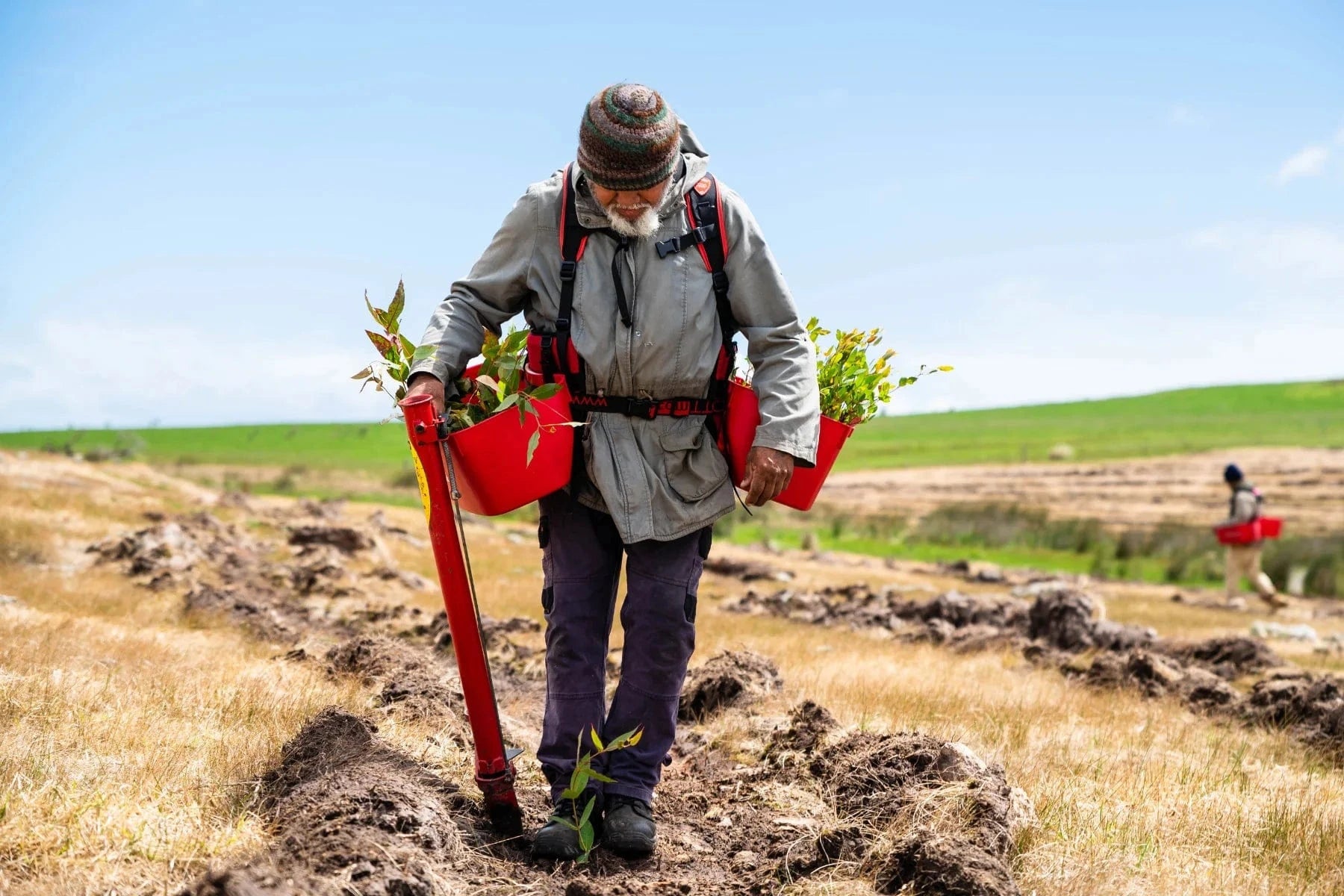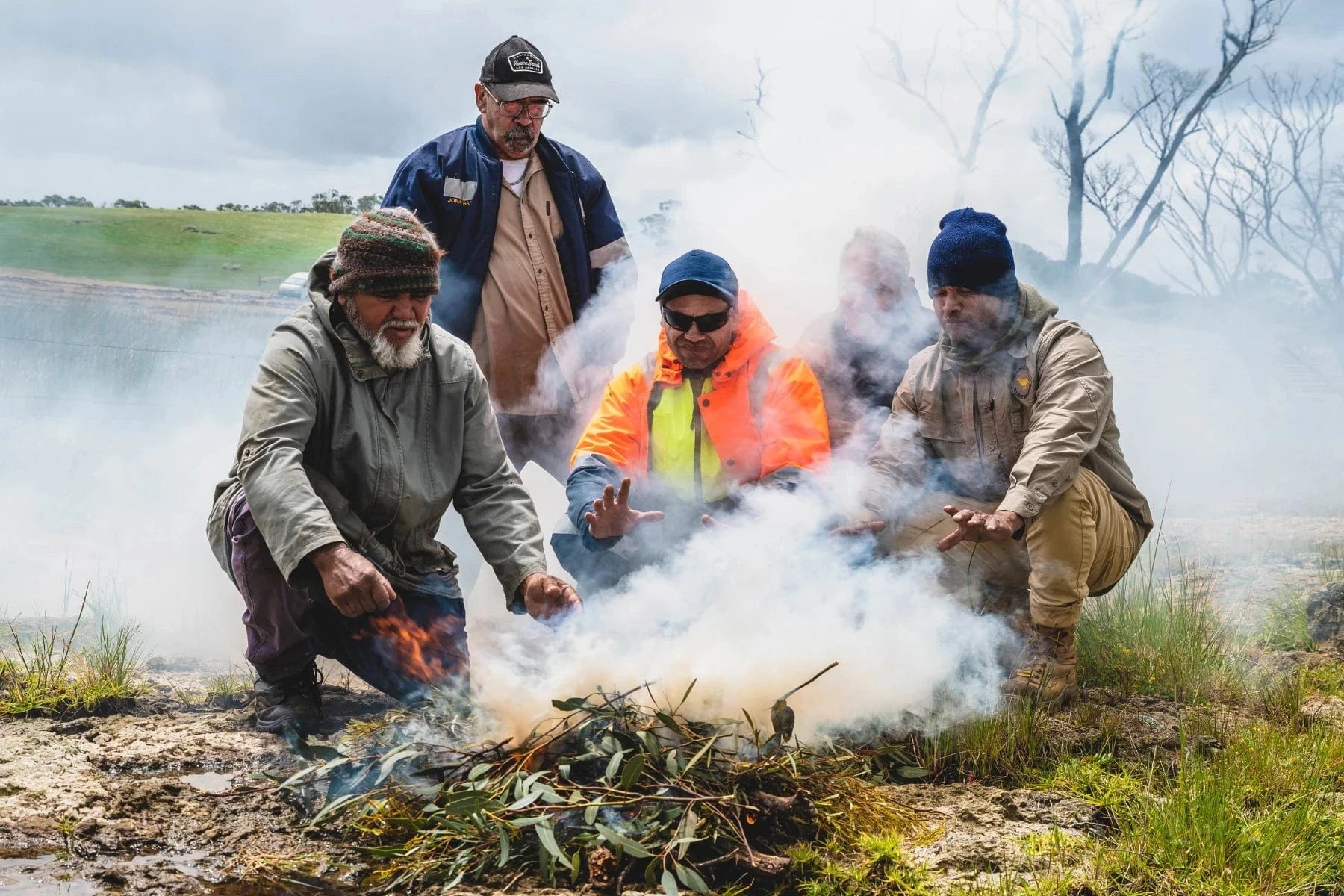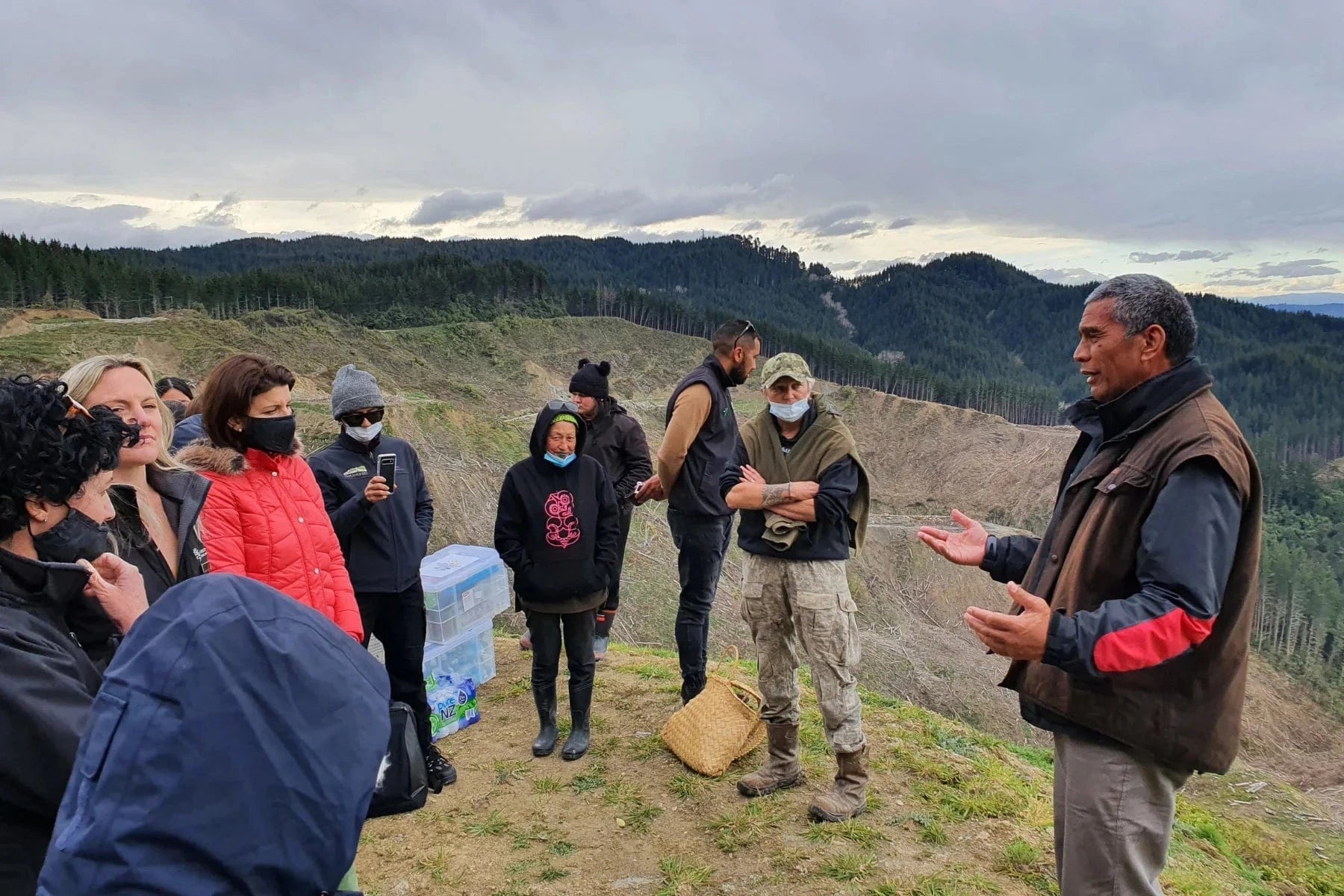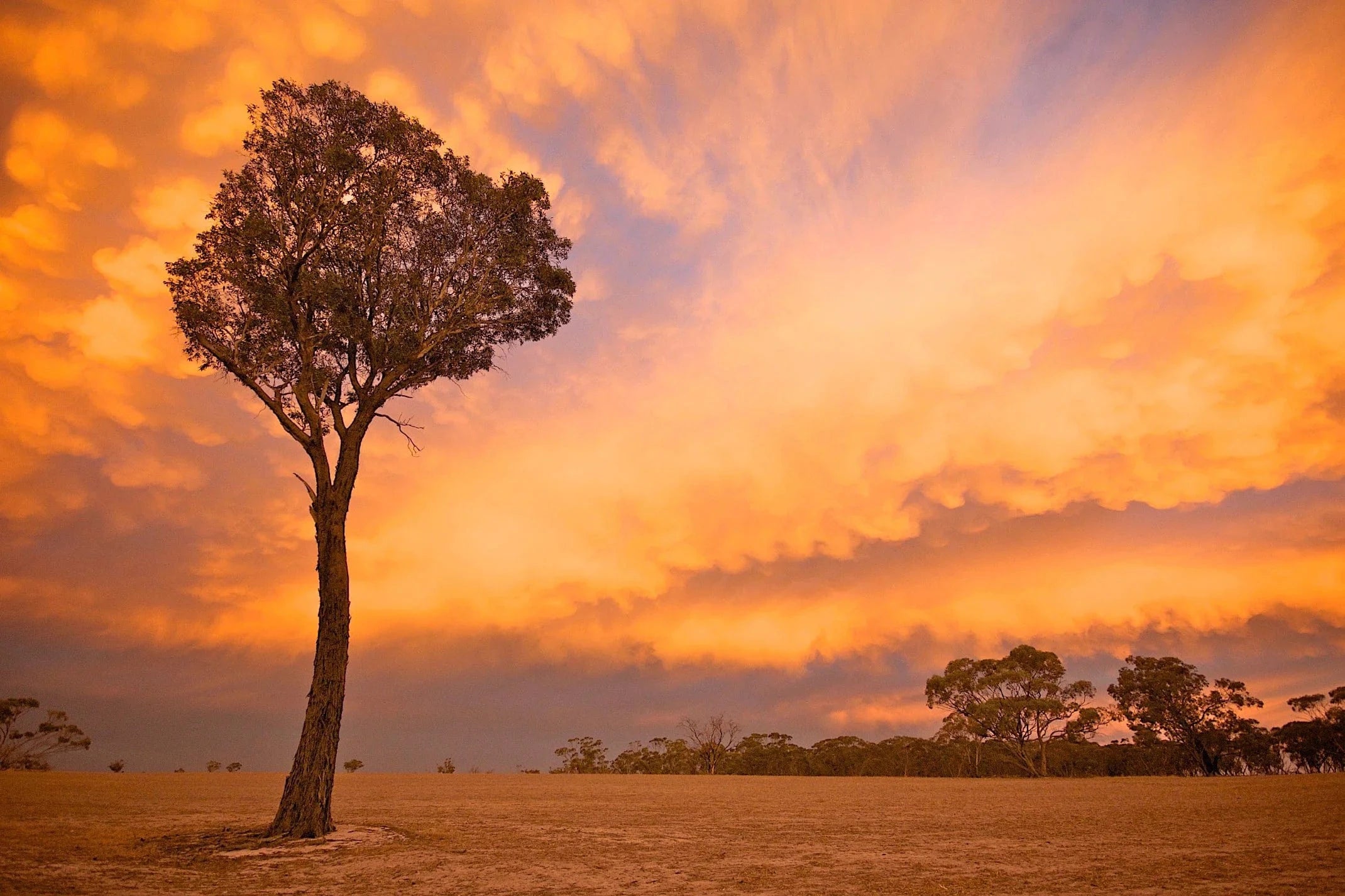1.1 Million Trees Planted in Western Australia & New Zealand

Get news, updates, & event Info delivered right to your inbox:
Planting Trees, Restoring ecosystems across Southwest Western Australia & New Zealand
We're proud to share that we've planted 1,189,490 trees in Australia's Southwest Western region — a biodiversity hotspot — and in New Zealand's Pamoa Forest. Working together with the indigenous communities that have cared for these lands for generations, we planted trees, restored areas degraded by wildfires and industrial agriculture, protected threatened and endangered biodiversity, established wildlife corridors and buffer zones, engaged communities with training and economic opportunities, and more. As the trees grow into maturity, they'll integrate into some of Earth's oldest and most unique ecosystems, providing benefits that last for generations to come.
Learn More About the Southwest Western Australia and New Zealand Projects



1 Million Trees Planted in The Great Southwest of Western Australia
As an internationally recognized Biodiversity Hotspot, the Southwest of Western Australia is one of the most biologically diverse areas on the planet. And with over 50% endemism (found nowhere else on earth), plant species richness is extraordinarily high.
Because the region has been unglaciated for over 250 Million years, many of the species that live and grow there hail from prehistoric times. This means that they've evolved to persist in arid climates on ancient, highly weathered, infertile soil — which is significant from an evolutionary standpoint. In the words of our partners, "The trees and shrubs here are true ‘Aussie battlers’ and are perhaps best equipped to persist in a hotter, drier, world."
Despite its rich ecological and cultural history, this area has been historically over-cleared for large-scale industrial agriculture — leaving behind fragmented ecosystems in need of restoration to improve their health and increase climate change resilience.
This project — which aimed to restore habitat, conserve biodiversity and buffer/extend important wildlife corridors —restored 357 acres of land on 6 sites with 90+ native tree & shrub species and will help to grow & strengthen the ecological food webs that native species depend on.

The shrub and tree species planted were carefully selected to native support wildlife — for example, we specifically planted species that produce seeds that are consumed the iconic and endangered Carnaby's Black Cockatoo, which is endemic to this region. Other flowering species will provide nectar for invertebrate life, while also feeding local nectarivorous bird and marsupial populations. In addition to the Cockatoo, over 150 bird species, including the Wedge-Tailed Eagle and Emu — as well as mammals like Pygmy Possums, Honey Possums, Kangaroos, Echidnas, and more, will benefit.
The trees will also help restore areas that were impacted by the historic Black Summer bushfires of 2019/2020. Trees were planted in the buffer zone of Stirling Ranges National Park, adjacent to the burn scar where 38,000 hectares were burned. By planting a diverse mix of local native species, the project will support the recovery and expansion of critical habitat.
In addition to biodiversity benefits, our local partners worked together with the local Indigenous community’s Nowanup Ranger Group to support cultural healing for members of the Noongar community at every project site. This included two Smoking Ceremonies and a Welcome to Country Ceremony to mark the start of the planting program, facilitated by local Noongar Elder and Leader Eugene Eades. Smoking ceremonies are an important part of indigenous culture and are an ancient custom to cleanse an area of bad spirits and promote good health. In addition, 12 Noogar Rangers were employed throughout the season to participate in the tree planting work.
Local farmers will also benefit from the registration of the planted areas with the Australian Government’s Clean Energy Regulator and Emissions Reduction Fund to generate certified carbon credits (ACCUs – Australian Carbon Credit Units). The establishment of an accredited carbon planting initiates a condition of permanence for the trees and shrubs, with the generation of a Carbon Covenant on the land title of each farm. This means that even if the land is sold, the planting will be protected by the government into perpetuity. The carbon credits also provide a way for the farmers to benefit financially from the land areas they have made available for environmental purposes. A win-win for the local environment and the local community!


189,490 Trees Planted In New Zealand
A total of 189,490 Mānuka and Poplar seedlings have been planted to restore 106 hectares of land in Gisborne, New Zealand. Formerly a monoculture pine plantation, this site is being restored into a biodiverse native forest that is contiguous with the Waingake Waterworks Bush — the largest and most significant remnant of coastal lowland forest in the region. Together these areas will become a massive biodiversity haven, providing a mosaic of differing habitat types protected from pest animal and plant species.
The planting will protect the existing water infrastructure and improve water quality for area communities, including Gisborne City. Reforesting will also provide a windbreak, and improve the stability of steep, highly erodible soils in vital water catchments and adjacent riparian areas.
Some of the rare and threatened species that will benefit include long-tailed bats, North Island rifleman, New Zealand falcons, hebe tairawhiti, and two species of threatened mistletoe (Peraxilla tetrapetala and Tupeia antarctica). In addition, numerous common forest bird species, invertebrates, and reptiles will benefit from the protection of this expanding habitat. Rare native freshwater fish species will also benefit over the long-term from improved water quality due to reduced sedimentation.
Mānuka trees, which are indigenous to the region, play an important environmental, cultural and economic role in the Pamoa Forest community. The program recognized and worked to re-establish mana whenua cultural and traditional relationships with the land by providing opportunities for training and employment in maintenance and monitoring over the next 7 – 10 years.
Mānuka honey is known around the world for its powerful medicinal effects, which can heal wounds, soothe skin conditions, boost immunity against cold & flu, and more. Produced by indigenous bees that collect pollen from Mānuka flowers, it's a valuable commodity and will create supplemental income for local community members.Importantly, a major component of the project is co-management with the local iwi (tribes) to ensure the cultural and economic needs of the community are met.
This includes developing a shared strategic plan and long-term vision for cultural, social, economic and ecological restoration. It also has helped to engage the local community in critical conversations around the impacts of climate change on ecosystems, biodiversity and resources — and form a shared vision for climate adaptation and action in the Tairāwhiti region.

From bushfire recovery to habitat restoration, we have several incredible projects across Australia and New Zealand. Want to join us in restoring these unique ecosystems? Plant trees in areas like Australia!
Get news, updates, & event Info delivered right to your inbox:
Related Posts
Why Trees Are Great Holiday Gifts
04/12/2025 by Meaghan Weeden
Real vs. Fake Christmas Trees: Which is Better For the Environment?
20/11/2025 by Meaghan Weeden
8 Reasons to be Grateful for Trees This Thanksgiving
18/11/2025 by Meaghan Weeden
Popular On One Tree Planted
What Causes Deforestation?
10/07/2025 by Meaghan Weeden
8 Amazing Bamboo Facts
14/01/2025 by Meaghan Weeden
Inspirational Quotes About Trees
09/01/2025 by Meaghan Weeden
Fundraising Disclosures

Be Part of the
Restoration Movement
The Grove is more than just a monthly giving program: it's a vibrant community of individuals who are dedicated to reforestation and environmental restoration on a global scale.
As a member of The Grove, you affirm your commitment to restoring forests, nurturing biodiversity, and fostering positive global change.





